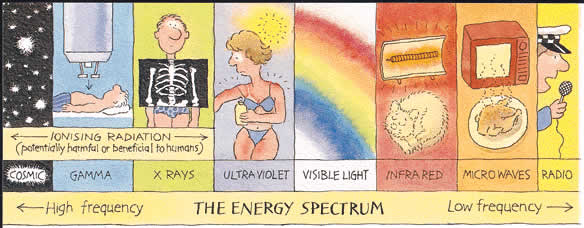| |
|
|
|
|
|
|
|
| |
HPS
Summer School in San Diego 2003
|
|
|
| |
|
|
|
|
|
|
|
click
on graphics

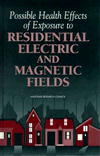
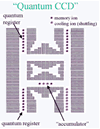
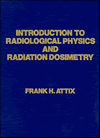
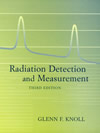
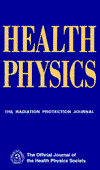

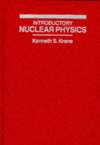
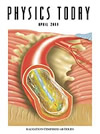


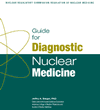
Click on words
|
|
University
Health Physics
Presenters |
|
|
|
 |
Robert
Halliburton
Instrumentation,
Calibration, and Measurements |
|
Is
currently the technical director for the Radiation
Standards and Calibration Laboratory (RaSCaL)
located at the Oak Ridge National Laboratory in
Oak Ridge, Tennessee. This facility, which
provides a broad range of calibration and exposure
services for both radiation monitoring instruments
and personnel dosimeters was designed, built,
and outfitted by Bob. Bob holds an MS in physics
from the University of Tennessee in Knoxville,
as well as a comprehensive certification from
the American Board of Health Physics. He
has over 25 years experience in applied health
physics and instrument calibration in both the
federal and private sectors. He has organized
and directed a number of nationally attended calibration
workshops, taught professional enrichment courses
on portable radiation protection instruments,
and presented many technical papers on instrument
calibration, facility design, and calibration
software development.
bob@calshack.com
|
|
| |
|
| |
|
|
|
 |
James
Turner
External
Radiation Dosimetry |
|
Jim
Turner is a retired Corporate Fellow from Oak
Ridge National Laboratory. He has served on
the Board of Directors
of the Health Physics Society and the editorial
staffs of Health Physics and Radiation Research.
He is a former member of the National Council
on Radiation Protection and Measurements and a
past President of the American Academy of Health
Physics. Dr. Turner has authored numerous papers
and three
textbooks in radiation physics
and dosimetry.
jamesturner17@comcast.net
|
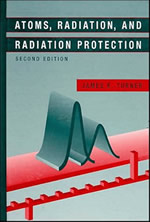 |
|
| |
|
|
|
 |
Clayton
French
Development
and Implementation of an Internal Radiation Safety
Program for Academic and Biomedical Institutions |
|
| Clay
French is a professor of radiological sciences
and the director of the Radiological Sciences
Program at the University
of Massachusetts Lowell. He earned a B.S.
degree in Radiological Health Physics from Lowell
Technological Institute, M.S. in Radiological
Sciences and Protection and a Ph.D. in Physics
from the University of Lowell. He has worked
in internal radiation dosimetry and bioassay
assessment for more than 25 years. He is currently
a member of the HPS
Academic Education Committee. He is certified
by the American Board of Health Physics.
Clayton_French@uml.edu
|
|
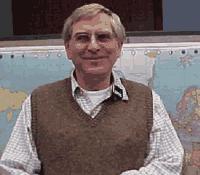 |
Frank
Harmon
Accelerators:
Types, Principles, Uses |
|
Dr.
Frank Harmon has been director of the Idaho
Accelerator Center (IAC) since it was created
in 1994. Harmon, who has his doctorate from the
University of Wyoming, joined the ISU faculty
in 1969, and was chairman of the physics department
in 1972-77 and 1983-97. In the early 1970s he
was a pioneer in the study of magnetic
resonance in biological systems, which, through
the work of many, has led to magnetic resonance
imaging (MRI) for medical applications. In the
early 1980s Harmon and his colleagues began using
the ISU Van
de Graaff accelerator for applications in
nuclear physics and materials science, which continue
in the present greatly expanded facilities of
the IAC. He has helped to establish a research
team of ISU and Idaho
National Engineering and Environmental Laboratory
(INEEL) personnel to develop accelerator and nuclear
science applications and to promote economic development
in Idaho.
harmon@athena.physics.isu.edu
|
|
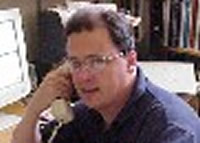 |
Richard
Brey
Accelerators:
Operational Safety and Dosimetry, |
|
Richard
R. Brey is an associate professor and director
of The Health
Physics Program at Idaho State University
(ISU) with 21 years of experience at various levels
within the discipline of Health Physics. Additionally,
he serves as the director of the Environmental
Assessment Laboratory at ISU and is one of
the Principal Investigators associated with the
Idaho Accelerator Center. He holds B.S., M.S.,
and Ph.D. degrees in Health Physics from Purdue
University. While at Purdue University, Dr. Brey
was an Environmental Restoration and Waste Management
Fellow, a Health physics Society Fellowship recipient
and an INPO
Graduate Fellow. He is certified by the American
Board of Health Physics.
brey@athena.physics.isu.edu
|
|
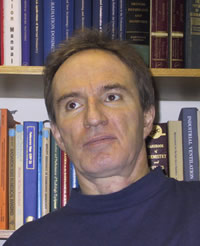 |
Vaclav
Vylet
Accelerators:
Radiation Fields and Shielding, |
|
Vaclav
(nickname “Vashek”) Vylet is Associate
Director of Radiation
Safety at Duke University where he also holds
an adjunct faculty position in Physics. Vashek
earned a M.S. degree in Nuclear Science from the
Technical University in Prague, Czech Republic,
and a Ph.D. from the Swiss Federal Institute of
Technology in Lausanne, Switzerland. After a post-doc
stay with the Cosmic Ray group at Washington University,
St. Louis, his carrier has been devoted to Accelerator
Health Physics in successive positions at Fermilab,
Stanford
Linear Accelerator Center and now at Duke.
Vashek has taught and organized accelerator radiation
safety courses at home and abroad. His interests
include radiation
detection and radiation
transport codes.
vylet001@mc.duke.edu
|
|
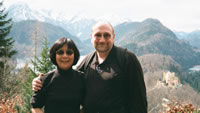
Dewey
Sprague is presently the Health Physicist responsible
for radiation safety training at Lawrence
Livermore National Laboratory (LLNL). He has
26 years of health physics experience with a broad
range of isotopes and machine-produced radiations.
These include reactor, accelerator, biomedical
research, medical (clinical) and non-ionizing
applications. During his career, he has served
as RSO for a pharmaceutical subsidiary of Schering-Plough
Corporation and as Manager of Environmental Health
and Safety for a medical device subsidiary of
Johnson and Johnson. Mr. Sprague holds a BA from
the University
of Missouri and is a Certified Laser Safety
Officer (CLSO). He has been active in the Health
Physics Society since 1982 |
Dewey
Sprague
An
Operational Guide to Laser Safety in A University
Setting |
|
| Prior
to joining LLNL, he served for 9 years as LSO
at the University of California at Berkeley,
where he developed and implemented the first
campus non-ionizing radiation safety program.
Mr. Sprague has long been an instructor for
and Board Member of the Laser
Institute of America (LIA). In this capacity,
he has developed and presented laser safety
training courses throughout the US and the Far
East. Mr. Sprague has also served on the Laser
Eye Protection Subcommittee of the LIA and has
been a consultant to the ANSI Z136.1 executive
committees.
As a founding
member of the Board of Laser Safety (BLS), Mr.
Sprague helped to develop the Certified
Laser Safety Officer (CLSO) certification
and testing requirements. Mr. Sprague is also
a co-founder of the Bay
Area Laser Safety Officers (BALSO), a group
dedicated to promoting professional laser safety
practice. Mr. Sprague has been a laser safety
consultant to Chrysler Corporation and a guest
lecturer at the Hong Kong University of Science
and Technology (HKUST).
PUBLICATIONS/PRESENTATIONS:
"Radiological Hazard Assessment of
Extracorporeal Shock Wave Lithotripsy Devices",
D. D. Sprague, W. R. Vermeere, 1986, Proceedings
of the Twentieth Midyear Topical Symposium of
the Health Physics Society (1986).
"Health Physics Experience Regarding
the Usage of I-131-Meta-Iodobenzylguanidine
for the Treatment of Metastatic Neuroblastoma",
D. D. Sprague, W. R. Vermeere, Presented at
the 32nd Annual Meeting of the Health Physics
Society in Salt Lake City (1987).
"Assessment of Commercially Available
Safety Glasses for Use as Laser Protective Eyewear",
E. O. Ciprazo, D. D. Sprague, Presented at the
41st Annual Meeting of the Health Physics Society
in Seattle (1996).
“Operational Inspections of Laser
Facilities”, E. O. Ciprazo, D. D.
Sprague, Proceedings of the 2000 CSHEMA Conference
at Stanford University (2000).
“Investigation of Laser Accidents”,
D. D. Sprague, Presented at the International
Laser Safety Conference in San Diego (2001).
sprague6@llnl.gov
|
|
| |
Jeffrey
Siegel
Implementation
Guidance for the New 10 CFR 35 Regulatory
Landscape,
|
|
Dr.
Jeffry A. Siegel is currently President and CEO
of Nuclear
Physics Enterprises, an international nuclear
physics consulting firm specializing in clinical
trial design for radionuclide therapy agents,
regulatory issues, quantitative diagnostic imaging
acquisition and analysis, and radiation dosimetry.
He has held both academic and hospital appointments
at Temple University School of Medicine in Philadelphia,
PA and Cooper Hospital/University Medical Center
in Camden, NJ. He has Masters degrees in chemistry
and physics and a PhD in Medical Physics from
UCLA.
Dr. Siegel holds five patents
and has authored more than 275 publications. He
is the chair of the joint Society
of Nuclear Medicine/American
College of Nuclear Physicians government relations
committee, a member of many other radiation-related
committees, an editorial board member of several
professional journals, and has written
a book on NRC regulation of diagnostic nuclear
medicine for the Society of Nuclear Medicine.
Siegelja@aol.com
|
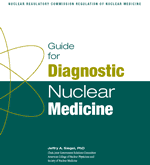 |
|
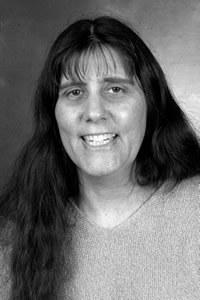 |
Victoria
Morris
Operational Issues
Associated with the Medical Use of Radiopharmaceucticals
and Brachytherapy
|
|
Victoria
Morris is currently the radiation safety officer
for the University
of Cincinnati. She received her bachelor’s
and a master’s degree in bionucleonics from
Purdue University. Vicki begin her career as a
health physics at Purdue
University in 1979. She left Purdue to take
a position as Radiation Safety Officer for Merck,
Sharp and Dohme West Point facility in 1987. She
has been at the University of Cincinnati since
1990. Vicki is certified by the American
Board of Health Physics.
vicki.morris@uc.edu.
|
|
| 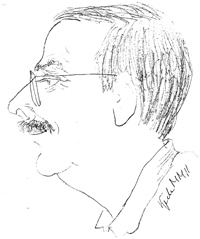
 |
Peter
Vernig
Radiation
Protection for Intravascular Brachytherapy Applications |
|
Just
before graduating from San Jose State University
with a bachelor of science degree in chemistry,
Peter’s advisor asked him if he had any
plans for after graduation, likely in preparation
to giving him some job hunting tips. He replied
that he was leaving on July 11 to report July
16, 1972 to Fort McClellan, Alabama for the Chemical
Officer’s Basic course and then on to Fort
Devens, Massachusetts. His adviser paused and
then said, “Well you really do know where
you are going.” Having been assigned to
the Chemical Corps with a Chemistry degree fooled
him into thinking that the Army actually knew
what it was doing and that perhaps accounts for
him spending almost 6 years in the Army instead
of the two he originally committed to as an ROTC
student. In 1977 he activated the 68th Chemical
Company one year ahead of schedule and that experience
convinced him to seek opportunities in civilian
life.
The first opportunity
came knocking on his door two days after his arrival
back to his parents home in Santa Clara, California
when the company a friend and fellow SJSU Chemistry
graduate worked for called him to have an interview
the next day. Lawrence Soft Ray, the developer
of I-125 Seeds for interstitial brachytherapy
was in the process of being sold to 3M Company
and three days after being hired by Lawrence Soft
Ray it became 3M Radiation Therapy Products and
a few months later he was laid off by 3M because
they decided to move the operation to St. Paul.
That shook him up so much he actually took a job
as a safety consultant with an insurance company.
A year later he went to work as Radiation Safety
Officer for Kevex
Corporation, a manufacturer of X-Ray fluorescence
analysis equipment. He has also worked as a consultant
and as reactor health physicist for the Berkeley
Research Reactor, University of California, Berkeley.
The decision to decommission the Berkeley
Research Reactor helped him decide to move
to Golden Colorado where he worked briefly for
Benedict Nuclear Pharmaceuticals, Inc. manufacturer
of I-123 capsules for thyroid imaging an uptake
studies before becoming the Radiation Safety Officer
at the VA Medical Center in 1989. In July of 2001,
a cardiologist walked into his office and said
he was the new chief of the cath lab and that
he wanted to start doing intravascular
brachytherapy and in October of that year
the Denver VA became the first VA facility to
offer the procedure. Peter has published articles
in RSO Magazine, and the Operational
Radiation Safety supplement to the Health
Physics Journal, and presented talks at the Central
Rocky Mountain Chapter of the Health Physics Society’s
Spring Technical Conference, the Rocky Mountain
Nuclear Medicine Technologists, and the local
chapter of the American Nuclear Society.
peter.vernig@med.va.gov
|
|
| |
|
|
|
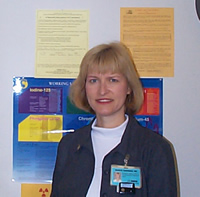 |
Marcia
Hartman
The
Role of the Health Physicist in Human Biomedical
Research |
|
Marcia
Hartman holds an M.S. in Health Physics from the
University of
Florida. She has worked at University
of California Davis Health System
(UCDHS) for the past 11 years. As a member of
Health Physics technical
staff, she is involved with all aspects of radiation
safety for clinical
and research applications of radiation use in
a teaching hospital
environment. Prior to this, she worked in the
nuclear power industry for
ten years in a variety of positions with responsibilities
for environmental
monitoring, internal and external dosimetry, ALARA
programs, training and
emergency preparedness.
mbhartman@ucdavis.edu
|
|
| |
|
| |
Sandy
O'Brien
Control
of Radioactive Materials at Remote Research Locations |
|
sobrien@ucsd.edu
|
|
| |
Andrew
Tompkins
Control
and Dispositioning of Sealed Sources |
|
J.
Andrew Tompkins graduated from West
Virginia University 1977, with a BS in Chemical
Engineering. He started his professional career
at the DOE’s Oak Ridge National Laboratory
that same year, as a Development Engineer working
in the Isotope Development Group. At ORNL Andy
learned the isotope production business, working
in fume hoods, glove boxes, and hot cells. In
1989 Andy moved to Las Vegas, Nevada to begin
a new career as an Environmental Health Physicist
on the DOE’s
Yucca Mountain Site Characterization Project.
Andy moved to Albuquerque, NM in 1991 and worked
as a contractor at Sandia and Los Alamos National
Laboratories. In 1996 Andy received a MS in Nuclear
Engineering, specializing in Health Physics from
the University of New Mexico. He became a Certified
Health Physicist in 1998. Andy has worked on the
Off-site Source
Recovery Project at Los Alamos National Laboratory
since 1998. At OSR Andy is the Field Engineer
assisting in recovery of over 5,000 TRU sealed
sources to date.
jatompkins@lanl.gov
|
|
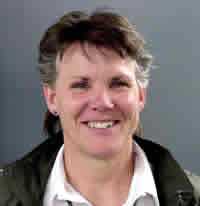 |
Carolyn
J. Owen
The
AAHP Standard for Qualification and Practice for
University and Medical Radiation Safety Officers,
|
|
Carolyn
Owen is currently a Health Physicist and Manager
at Lawrence Livermore
National Laboratory. Her duties include Manager
for the ES&H Manual, Work Smart Standards,
and an Integrated Safety Management (ISM) improvement
effort. She is also Deputy Laboratory Training
Manager, and manages projects involving software
development and web-based applications for implementing
ES&H assessments. Previously, she was Director,
Environmental Health & Safety for Chiron Corporation
(1991-95), and Radiation Safety Officer (1984-91)
and Assistant Director, Environmental Health &
Safety (1990-91), at the University of California,
Davis. She received a BS in Zoology and an MS
in Biophysics, both from UC Davis, and has been
certified by ABHP since 1988
owen6@llnl.gov
|
|
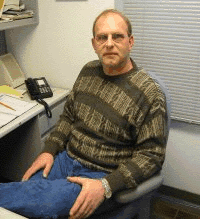 |
Gerry
Westcott
Performance-based
Radiation Safety Program Reviews and
Integration of Safety Programs: The Departmental
Safety Advisor Concept |
|
Gerry Westcott has been in the health and safety
field for the past 23 years and has been the UC
Davis campus Radiation Safety Officer for the
past 12 years. UC Davis has several unique challenges
in regards to radiation use that include a veterinary
medicine teaching hospital, school of medicine,
cyclotron, 2 MW research reactor and numerous
research applications in the plant, biological
and animal sciences. Consequently, Mr. Westcott
has spent a great deal of time developing, organizing,
and implementing a radiation safety program that
meets the university’s Broadscope license
commitments and state and federal regulations
in a customer service manner that supports the
university’s research mission.
gdwestcot@ae.ucdavis.edu
|
|
| |
|
| |
|
|
|
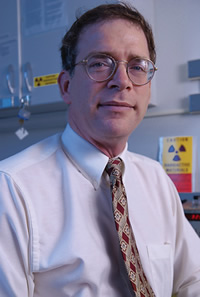
Andrew Karam
is the University
of Rochester’s Radiation Safety Officer
and an adjunct faculty member in the Environmental
Health and Earth and Environmental Sciences departments.
Prior to this appointment he worked as a health
physicist at the Ohio State University, Manager
of Radiological Services at R&R International
Incorporated, as a health physicist for the State
of Ohio, and as an engineering laboratory technician
on the USS
Plunger (SSN 595)
|
Andrew
Karam
Campus
Radiological Security |
|
Dr.
Karam is currently a member of the HPS
Board of Directors where he is the Board Liaison
to the Homeland Security, Science Teachers Workshop,
and Public Education Committees and to the Radon
Section. He is a member of the Medical and RSO
Sections and founded the Academic and Medical
RSO e-mail list server, which he continues to
maintain. Andrew also works as an Associate Editor
for the Health
Physics News, the HPS web page, and Strahlenschutz
Praxis and he writes occasional articles on radiation
safety for the AIHA Synergist. He is a member
of the Radiation
Safety without Borders program, assigned to
work with Lithuanian health physicists and is
also a member of the OECD Task Group on Recycled
Radioactive Materials.
Other
professional writing includes 16 peer-reviewed
scientific papers, over 50 articles in non-reviewed
publications, and chapters on nuclear or radiological
topics in three textbooks. Non-professional writing
includes over 700 articles in the encyclopedia
project, Science and its Times and the book, Rig
Ship for Ultra Quiet. Dr. Karam is also frequently
interviewed and asked to speak on radiological
issues. His research and professional interests
include changes in terrestrial radiation levels
over the history of the earth, the space radiation
environment and its effects on astrobiology, the
high background radiation area in Ramsar, Iran,
and issues related to NORM/TENORM.
Selected Publications and Presentations:
1. Karam, PA. and Veenema, TG, Clinical Response
to Radiological Incidents and Emergencies, Journal
of Nursing 2003, (in press)
2. Karam, PA. The effects of solar evolution on
cosmic radiation exposure, (Health Physics, in
press) 2003
3. Karam, PA. Gamma radiation dose from supernova-produced
radionuclides Radiation Physics and Chemistry
64:77-87. 2002
4. Karam, PA. Gamma and neutrino radiation dose
from gamma ray bursts and nearby supernovae, Health
Physics 82(4):491-499. 2002
5. M. Ghiassi-nejad, S. M. J. Mortazavi, J. R.
Cameron, A. Niroomand-rad, P.A. Karam, Very High
Background Radiation Areas of Ramsar, Iran: Preliminary
Biological Studies and Possible Implications,
Health Physics 82(1):87-93 2002
6. Karam, PA; Leslie, SA; Anbar, A. Effects of
changing atmospheric oxygen levels on radiogenic
mutation rates over the history of life on Earth,
Health Physics 81(5):545-553 2001
7. Karam, PA. Methods for calculating fetal dose
from diagnostic medical procedures: A summary
of resources and techniques from existing literature.
Operational Radiation Safety, 79(5):S85-90 2000
8. Karam, PA; Leslie, SA. Calculations of background
beta-gamma radiation dose through geologic time
(with Steven Leslie), Health Physics 77(6):662-667,
1999
Andrew_Karam@URMC.Rochester.edu
|
|
| |
|
 |
|
| |
|
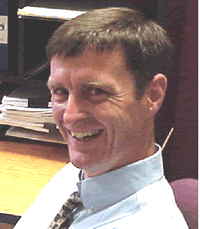 |
Robert
J. Emery
Risk
Management for Radiation Safety Professionals
and
The Selling of Safety in an Academic Setting
|
|
Robert Emery is the Executive Director of Environmental
Health & Safety for the University
of Texas-Houston Health Science Center and
Associate Professor of Occupational Health at
the University
of Texas School of Public Health. Bob has
over 20 years of experience in health and safety
matters indigenous to educational and healthcare
institutions. He holds masters degrees in health
physics and environmental sciences from the University
of North Carolina system, and a doctorate
in occupational health from the University
of Texas School of Public Health. Bob holds
the unique distinction of possessing national
board certification and registration in all of
the main areas of health and safety; health physics
Certified Health Physicist (CHP),
occupational safety Certified Safety Professional
(CSP), industrial hygiene Certified
Industrial Hygienist (CIH), biological
safety Registered Biosafety Professional
(RBP), hazardous materials management
Certified Hazardous Materials Manager
(CHMM) and risk management Associate
in Risk Management (ARM). In May 2000,
Bob also assumed the role of Assistant Vice President
for Research Administration to coordinate the
services used to gain support for research activities
at the Health Science Center.
robert.j.emery@uth.tmc.edu
|
|
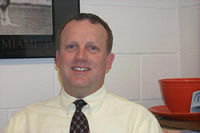 |
James
Schweitzer
Organizational
Approaches to Campus Health Physics Programs |
|
Jim
Schweitzer has served as Director of Radiological
and Environmental Management at Purdue University
for nearly 2 years. He has also served the Radiation
Safety Officer for 15 years in a program that
is responsible for a Broad Scope and 3 additional
NRC licenses. He also has a faculty appointment
in the School of Health Sciences where he assists
in teaching applied health physics. Jim received
his B.S. Degree from Randolph-Macon
College and has a M.S. and Ph. D. from Purdue
University. He is a Certified Health
Physicist. His memberships include the
Health Physics Society, Hoosier Chapter HPS (President),
Conference of Radiation Control Program Directors,
and Campus Radiation Safety Officers.
Jim’s website: http://www.adpc.purdue.edu/PhysFac/rem/home/files/staff/jimsch.htm
jfschweitzer@purdue.edu |
|
|
| |
|
|
|
|
|
|
|
| |
|
|
|
|
|
|
|
Registration
/ Housing
|
|
| |
|
|
| |
 Download
Registration Packet
Download
Registration Packet
Housing
A selection of on-campus and
off-campus accommodations is available. On-campus
housing consists of “flex
housing”, which are apartment-style
units that are located adjacent to the Fermanian
Business Center. These units feature basic amenities
(such as fridge, microwave, and Internet connection)
along with a great ocean view. Each unit has
two bedrooms, with either two or three beds
per room. The cost for the week for a private
bedroom is $265; the cost for a shared bedroom
is $135. Families can rent an entire unit (sleeps
5) for $525 for the week. Please note that alcoholic
beverages are not allowed on campus.
For those wanting accommodations with more amenities,
special rates can be obtained at some nearby
hotels. Please note, however, that there are
no hotels within reasonable walking distance
of the PLNU Campus. Limited transportation will
be available to pick up and drop off students;
however, the organizers cannot guarantee that
all back-and-forth transportation requests can
be accommodated, so some personal transportation
arrangements may be necessary.
A range of hotel accommodations is available,
depending on your budget and amenities index.
A listing of hotels with special rates for PLNU
functions, along with descriptions and directions,
can be found at www.ptloma.edu/alumni/accommodations.htm.
Please note that reservations must be made by
phone to get the PLNU special rate.
Accommodations
- The on-site housing accommodations
are full; however, there are lots of nearby
hotels to fit a wide range of budgets. For a
list of near-by hotels follow the link.
Meals
and Refreshments
A cafeteria is located close
to the Fermanian Business Center. A meal package
for the week of the Summer School (covering
breakfast, lunch, and dinner) is available for
$95, or meals can be purchased individually
at the cafeteria. There are many great cafes
and restaurants within short driving distance.
Refreshments will be provided during breaks,
and the cost is included in the registration
fee.
Registration
and Night Out
A reception and registration
area will be open from 2:00 PM to 7:00 PM on
Sunday at the Fermanian Conference Center. Light
refreshments will be served. A special night
out including dinner is planned for Wednesday
from 6:00 PM until 9:00 PM. The cost of both
of these events is included in the registration
fee. Guests may attend the night out and dinner
for $30. Check the Summer School Web site for
updated information on the night out.
Transportation
Most major airlines
fly into the San Diego International Airport.
PLNU is only a short drive from the airport
(about four miles). Taxi fare should be about
$10. For off-campus stays, please check with
the hotel for information on transportation
from the airport.
Area
Attractions
San Diego is one of
the premier tourist destinations in the country.
In addition to the usual attractions, there
is a world-class surfing area just a short walk
from the Campus, and Cabrillo National Monument
is just a stone’s throw away. Sea World,
Old Town, and Downtown San Diego are just a
few miles away. The surrounding area is conducive
to hiking, biking (assuming you like hills!),
and other recreational activities.
|
|
|
| |
|
|
|
|
|
|
|
| |
|
|
|
|
|
|
|
|
Questions
/ Suggestions / Answers
|
|
|
|
|
|
|
|
|
|
|
|
What's
New!
Registration
Period Extended: There is still space
left in the Summer School and we are extending the
enrollment period. So if you have thought about attending,
now is the time to act!
 HPS
Schedule Update: We have a new schedule
including updated information on reception and check-in
times, HPS
Schedule Update: We have a new schedule
including updated information on reception and check-in
times,
class times, break and meal times, emergency contact
numbers, and other related information.
Download the schedule here. "HPS
Schedule Update.pdf
Social Night
Out - the night out will be Wednesday,
July 16 and will feature a fabulous evening of exploring
and dinner at the San
Diego Zoo. The cost for registrants is covered
by the course fee.
Accommodations
- The on-site "flex housing" accommodations
are full;
we are currently trying to obtain
additional dorm rooms. Watch this space for updates.
For a list of near-by
hotels follow the link.
Limited shuttle service will be available to nearby
locations
(Point Loma and Shelter Island locations).
Call Rich at 858-483-0807 for information on nearby
hotels.
|
|
|
|
|
|
|
|
|
|
|
|
|

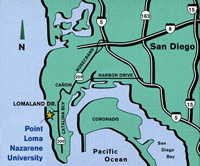
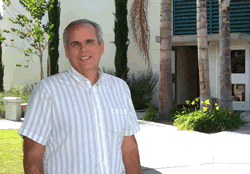 Dr.
Patrick Papin graduated with a master’s degree
in Radiological
Health Physics from SDSU in 1981. In 1985 he received
his doctorate in Biomedical
Physics from UCLA. He then returned to SDSU as
a faculty member of the Physics
Department. Currently Dr.
Papin is serving as the Physics
Department Chairman.
Dr.
Patrick Papin graduated with a master’s degree
in Radiological
Health Physics from SDSU in 1981. In 1985 he received
his doctorate in Biomedical
Physics from UCLA. He then returned to SDSU as
a faculty member of the Physics
Department. Currently Dr.
Papin is serving as the Physics
Department Chairman. 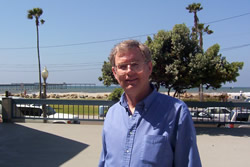

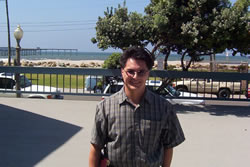
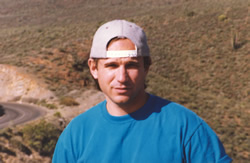
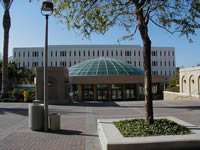
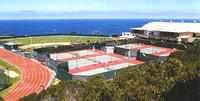
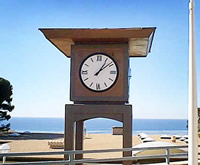
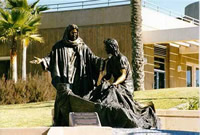
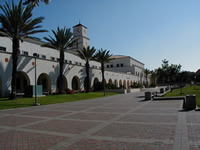


![]()
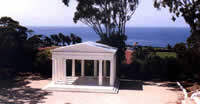

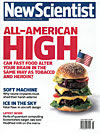
![]()
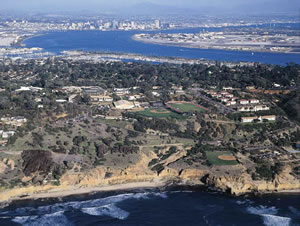




 Radiation Safety
Radiation Safety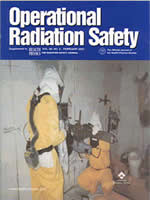
 HYPERPHYSICS
HYPERPHYSICS

